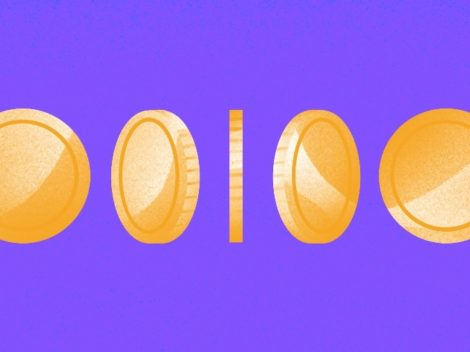Pinterest is making it all fit.
The image-based social network is ramping up revenue while achieving a key revenue threshold, putting it on pace to go public in a year, according to CNBC.
Follow Crunchbase News on Twitter
The news was almost a surprise given how long Pinterest has been considered an IPO candidate. Here’s some hype from back before Twitter went public in 2013. Speculation about its possible IPO continued in 2015, 2016, 2017, and 2018.
So Pinterest potentially going public in 2019 is therefore not a surprise; it’s more of a relief. But will it manage to hang on to its valuation in the public markets?
To properly answer that question, let’s get our head around the firm’s funding, valuation, revenue, and monthly active users.
Funding
According to its Crunchbase profile, Pinterest has around three dozen investors from over a dozen rounds, bringing in around $1.5 billion in capital.
That capital provided the fuel for Pinterest’s growth to hundreds of millions of monthly active users (more on that shortly) while also pushing the firm’s valuation into the sky. By its 2012 Series C, Pinterest was worth $1.5 billion after a $100 million infusion. Its $200 million Series D pushed that figure to $2.5 billion (post-money) in 2013.
That same year Pinterest raised $225 million more, bringing its valuation to around $3.8 billion. You can guess what came next. In 2014, Pinterest raised $200 million, bringing its Series F valuation to around $5 billion after the new money was counted.
There’s more. In 2015 Pinterest put $367 million more into its warchest, pushing its valuation over the $10 billion mark. Indeed, the firm was worth a little over $11 billion following its Series G, according to Crunchbase.
The company raised more, went through some secondary transactions, and finally raised another $150 million in 2017 at a valuation of a little more than $12 billion. (Our coverage of the final tranche from the time.)
What did all that money buy Pinterest’s investors?
How Quickly Pinterest Grew
CNBC’s article provides some incredibly useful new data, but only the latest information in a large pool of figures. Companies as large, well-funded, and valuable as Pinterest leak information over time.
Pinterest launched in 2010 marking the start of its user accretion. It released “Promoted Pins” in 2013, kicking off its core monetization. From those two dates we’ll move forward.
Given that Promoted Pins launched in 2013, the first revenue number that we have for Pinterest comes in 2014. In that first calendar year, Pinterest brought in around $24 million or $25 million, depending on reporting.
That may feel impressive; however, by that time, Pinterest had a valuation in the billions. That’s the same year that investors poured another $200 million into the firm at a valuation of around $5 billion. Those investors were betting that Pinterest would have a quick revenue ramp.
In 2015, Pinterest pulled that off for its investors, clocking revenue of $139 million (sources agree on this one), up 479 percent in a single year. That same year, Pinterest pushed its valuation over the $10 billion mark, and, critically, began to miss projections, as reported by TechCrunch:
[D]ocuments that show Pinterest has been forecasting $169 million in revenue this year and $2.8 billion in annual revenue by 2018. Pinterest was also expecting to grow its monthly active users to 151 million by the end of 2015 and 329 million by 2018.
The same article reported that Pinterest had grown to 88 million monthly active users in January of 2015. The firm also crossed 100 million monthly active users in September of the same year.
You may have noted that 2016 was the only year in the middle of Pinterest’s funding run in which it didn’t raise money, at least that we know of. That may be attributable to the company ’s missed revenue projections in the year. As TechCrunch wrote, the firm expected $169 million in top line during 2015. Turning in $139 million as it did was about an 18 percent flub.
But in 2016, Pinterest grew again, posting $298.9 million in revenue. In October of that year, Pinterest announced that it then had 150 million monthly active users. In about a year, the startup had grown its user base by half and its revenue by about 115 percent.
Another $150 million in capital was put into the company in 2017, pushing its valuation to a little over $12 billion. Pinterest’s top line also expanded to $472.9 million, up just over 58 percent compared to the prior year. In April 2017, the firm reached 175 million monthly active users. Another 25 million users were captured by September of the same year.
More users, more revenue. Pinterest’s growth was slowing in percentage terms, but the company’s top line was finally bringing its implied revenue multiple closer to the planet.
Regardless, the nearly $473 million revenue result in 2017 was a miss. The firm’s target was over $500 million, and the company lost around $100 million in the year. But with another $150 million banked in 2017, Pinterest entered 2018 on what could be called solid footing—depending on the context.
Recall that Pinterest had targeted 329 million monthly active users in 2018 and revenue of $2.8 billion. The real results are smaller. The firm was under 250 million monthly active users in May of 2018, and it will graze, but likely not surpass, $1 billion in sales this year. That’s a far cry from both projections.
Here’s what all that looks like in chart form:

Back in 2015, investors were expecting a lot more by 2018. Given the gap between the 2015-era $2.8 billion target for Pinterest’s 2018 revenue, and the latter $500 million 2017 revenue target, it’s likely that Pinterest had to recalibrate its revenue guidance along the way—which it still missed.
For a startup, coming in under plan is completely unsurprising. But if you’re valued on future growth, as Pinterest was in its early days, those targets are more weighty than usual; you have bigger clothes to grow into.
Making that point: Pinterest cracked the $10 billion valuation mark in 2015. It’s picked up a little around 20 percent more value since then, expanding its valuation to $12.3 billion. But over the same time, its revenues grew 240 percent through 2017, and if the firm hits the $1 billion revenue mark in 2018, 619 percent.
Pinterest essentially pre-banked its valuation growth when it could get the capital.
Next up for Pinterest is meeting its 2018 expectation and likely tidying up its P&L. More when we have it.
Top Image Credit: Li-Anne Dias
Stay up to date with recent funding rounds, acquisitions, and more with the Crunchbase Daily.






![Illustration of a guy watering plants with a blocked hose - Global [Dom Guzman]](https://news.crunchbase.com/wp-content/uploads/quarterly-global-3-300x168.jpg)
67.1K Followers